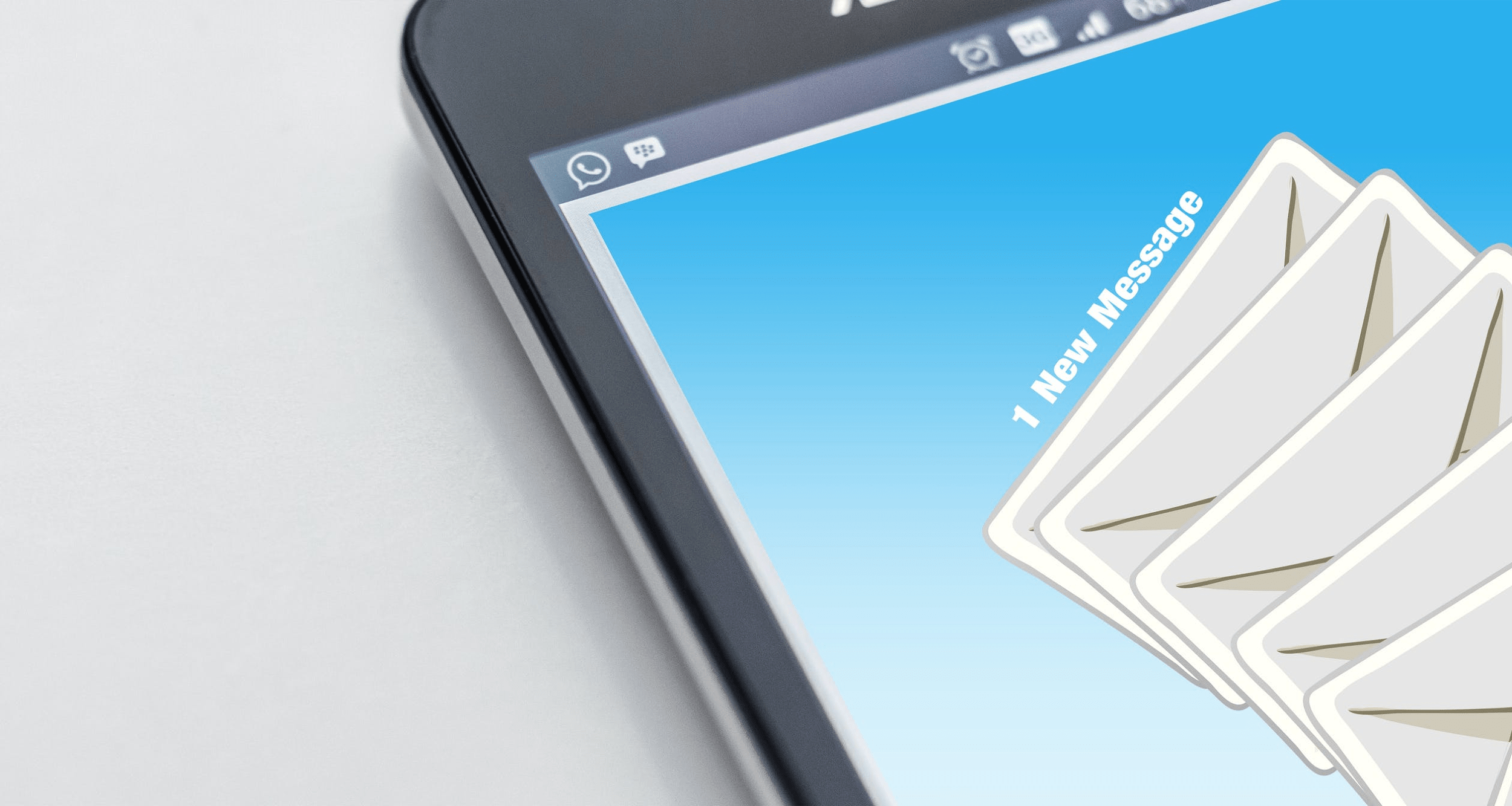Email marketing is one of the most effective ways to stay in touch with your prospects and customers and keep your product or service in the forefront of their minds.
In fact, 72% of online consumers say that email is their preferred method of contact from brands.
However—if you don’t know what you’re doing, it can also be one of the easiest tactics to screw up….
…and a BIG way to mess up email marketing is to have a bad subject line.
The average person receives anywhere from 120 to 130 emails a day. If you’re like most people, there’s so much noise clamoring for your attention in your inbox that you only open the emails that have direct relevance or value to you.
The rest? They get one-way ticket to the purgatory of your Recently Deleted box.
But it gets worse…
70% of consumers mark emails as spam purely based on their subject lines.
And if you aren’t strategizing your email subject lines, it’s quite possible that this is what your prospects and customers are doing to your messages.
Having bad email subject lines creates a domino effect that keeps your strategy from working. Think about it. If your list doesn’t read your subject line, they aren’t opening the email….
…which means they aren’t reading it…
…which means they aren’t seeing the offers or value you’re providing them with…
…which ultimately means they aren’t buying anything…
…and you aren’t making money.
You’re basically throwing away all the money you’re budgeting for email marketing just because you couldn’t write a subject line good enough to grab their attention.
And it isn’t just about grabbing their attention. It’s about creating a subject line that is so enticing and emotionally appealing that it not only stands out from the other 120-130 emails they’ll see on a given day, but makes them actually open the thing so they can see all the good stuff you’ve put inside.
But what makes GOOD email subject lines so hard to write? After all, it’s just a line of text—not even an entire sentence in some cases. Why is the art of the subject line so hard to nail?

Here’s the answer: it all goes back to originality.
We’re so wired in with technology and the deluge of information we get slammed with every day that there isn’t much we haven’t seen, and therefore, there isn’t much in the way of conventional email subject lines we haven’t seen.
It used to be that including words like FREE, URGENT, ACT FAST, and GREAT DEALS would be enough to get people to click. But now, those words come across as tired, cheap, and played out.
In fact, they can be downright off-putting, causing readers to label your company as spam.
Even ideas that seem like they’d result in higher engagement don’t actually pan out. For example, many companies have tried adding emoji to their subject lines—but in reality, the data shows that emoji aren’t enough to save bland, vague, or spammy language. 😢
It may not be particularly flashy, but good old fashioned words are the best tool for writing good email subject lines for marketing.
With that said….here are some tips for email marketing subject lines that work.
Put important information up front
They don’t call them “subject lines” for nothing. One crucial email marketing subject line best practice is that it should at least hint at the topic of the email.
Yes, you can create curiosity or intrigue (we’ll talk about that later). But there is such a thing as being too vague. The reader should not have to open the email to figure out exactly what it is that you want from them.
This is especially true for marketing emails. Once again: you have a LOT of competition in your reader’s inbox. If they don’t know what your email is about on even some level, they probably won’t read it.
Your customers are busy people. Show them the courtesy of alluding to or directly stating why you’re contacting them.
Bad email subject line: Got a second?
Good email subject line: Introducing…our newest location!
Personalize it

Nobody likes to be just a face in a crowd. Don’t let members of your list feel like this.
Personalizing your emails is one of the most effective tips for email marketing subject lines for getting people to open your messages and can help them forge a greater emotional connection with your brand.
One of the most effective ways to accomplish this email marketing subject line best practice is by plugging in the user’s first name. People are naturally attracted to these subject lines because quite frankly, they’re attracted to the sound of their own names.
And it pays off. Personalized email subject lines can increase your open rates by as much as 29% in some studies.
The thing to watch out for is that the First Name tactic can easily be overused. When a person’s name starts showing up in every single email subject line they receive, it stops being intriguing and starts looking manufactured (not to mention creepy).
It’s like incorporating emoji into your subject lines—using first names isn’t going to be enough to save ineffective language.
Thankfully, there are other tips for email marketing subject lines that involve various methods of personalization.
Perhaps the biggest is a technique called segmentation—diving your list up into categories and groups based on your customers’ purchase histories and interests.
Sending the same message to your entire list at any given time is a cardinal email marketing sin. It’s like trying to sell cat food to customers who are clearly buying supplies for a dog, or pushing new country music releases on a death metal fan: your message will be deemed completely irrelevant.
Using your customers’ interests and previous orders to personalize your subject lines is an email marketing subject line best practice that will simply appeal to readers by making your message fit in with the things they care about.
Bad email subject line: [FirstName] your daily deals are here!
Good email subject line: If Fluffy loved our cat food, she’ll love this!
Emphasize urgency and value
We know what you’re thinking.
“Wait a minute…didn’t you just say that I shouldn’t say URGENT and ACT FAST?”
You are correct. We did say that.
But there’s a difference between falling back on easy words that do nothing and truly crafting a subject line that trips our natural fear of missing out.
And you can do it without even literally mentioning urgency at all.
In his book Influence, now considered a mainstay of marketing literature, Robert Cialdini explores the top six principles of social influence that can be used to effectively persuade. Scarcity is one of them.
And it isn’t just about a fear of missing out. It’s about the fact that when something appears to be or is advertised as scarce, it actually makes the product more desirable.
And that gives you an “in” to not only get your emails opened, but be able to tell readers all about the offer your product or service presents.
So, how do you accomplish scarcity in your subject lines without sounding fake and spammy? Here are just a few ideas:
* For a limited time – This one works because it puts the focus of the scarcity not on the product itself, but on time. Where “ACT NOW!” sounds like a scam and focuses on commanding the reader to do something, this subtly makes them aware that they’re running the risk of missing out entirely.
* Short supply/High demand – This is a short, effective way of conveying that there is not only a limited amount of a product available, but that it’s extremely popular. Not only do these phrases imply scarcity, but they also communicate social proof that points to a high value product.
* “Unique” – Cialdini based much of his scarcity research on studies that showed that people were more likely to purchase a product if it was referred to as “unique” or “a unique opportunity.” If something is unique, it must also be in limited supply—and of high value.
So emphasize scarcity, but do it without cliche, spammy phrases.
Bad subject line: [FirstName], time’s almost up—ACT NOW!
Good subject line: Limited time: spend $50 and get a coffee mug!
Create curiosity

Curiosity is what makes readers want to open emails. It’s why emoji and your prospect’s first name aren’t enough to get people to engage with them. And you should definitely take the opportunity to pique their interest as you follow tips for email marketing subject lines.
But there’s a difference between curiosity and hype.
Hype is something our society is quickly becoming desensitized to. We’re talking click-baity headlines, sensationalized language, and cliche adjectives (seriously, nothing can be truly “breakthrough,” “exclusive,” “groundbreaking,” or “revolutionary” if these words are everywhere).
Curiosity doesn’t come from cute tricks or dramatic language. It’s not a fireworks show. It’s using subtle bits of information and language to make readers sit up and pay attention.
Here are a few tricks for email marketing best practices in this area:
* Ask a question: Questions are intriguing because they not only make subscribers want to open the email to learn the answer, but also start a dialogue in the reader’s mind about what the answer could be.
* Make a shocking or controversial statement: This one requires you to know your audience a bit and avoid saying anything that could be overly offensive or even outright inappropriate.
* Say something provocative: This is where you write a subject line that is purely designed to make them unable to resist the click. Lines like, “What’s this?”, “Call me crazy…”, “Forget something?”, and “Don’t open this email!” all grab attention and seal the deal when it comes to evoking curiosity.
HOWEVER…you do need to be careful of this one, too. Use it too often and it will stop being effective and start looking gimmicky.
Split test
Like any aspect of digital marketing, you can make as many guesses about what works for different businesses as you want, but until you have statistically significant data, your insights are just that: guesses. And guesses never consistently get results.
The best way to learn whether your guesses actually work? Test it.
To narrow down what types of subject lines work best for your audience, split test by sending the same email with two different subject lines to a smaller group from your list, splitting the email readership 50/50. Then, send the email to the rest of your list with the winning subject line.
It’s the easiest way to see what works, what doesn’t, and how your readers respond. And it ultimately helps you increase your open rates.
For example—let’s say you’ve got a clever, curiosity-induced subject line in mind, but you think it might be a bit riskier than simply stating your unique selling proposition to readers. Test it and see which one wins.
Or maybe you’ve got a short subject line and a longer one. Both express the same basic idea…but will one be more effective than the other? Test it and find out.
Split testing is one of the most necessary email subject line best practices because it takes the guesswork out of your campaigns.
It gives you the freedom to be daring and risky—if you test it on a small portion of your audience first, the worst case scenario is that it doesn’t work.
And either way, you’ll find out what subject line will be most effective for winning over your readers.
Remember your goals

Ultimately, one of the most important tips for email subject lines is that they must be in line with your goals for the campaign.
Like any other piece of digital marketing copy, it all goes back to the desired action you want your audience to take. And to be effective, your subject line must provide an entry point for them to take that action.
Obviously, the subject line has to be interesting enough to get them to open the email. But it should also foreshadow the content of what’s inside.
For example, in a Gain Logic Fear email series, the Gain email focuses on showing the audience what they have to gain from taking the desired action. A subject line like “Wait, you forgot something” both reminds them of the previous action they took, whether it was signing up for the list or requesting a lead magnet and foreshadows that there is another action to take inside the email.
For instance, last month, our email series about video marketing included an email with the subject line “You, a video producer?” This subject line both asks a thought-provoking question (am I really a video producer? Could I be?) and previews the topic of the email (that online video content is so abundant that anyone can create it).
Your subject line can be fun, but it shouldn’t be all fluff. Somewhere, there has to be a connection to what you want the reader to understand or do.
Bonus Tip: Common Language Fails to Avoid
No matter how great your subject line ideas might be, there are lots of ways you can wreck them with some easy-to-avoid language blunders. One of the most important email subject line best practices is to know what not to do. Here are just a few of them…
* Don’t use all caps. It looks very aggressive and will give your readers the impression that you are yelling at them. SO JUST DONT DO IT, OKAY???
* Don’t make them too long. Because many people view email on their mobile phones, long subject lines run the risk of getting cut off. The exact number varies, but most experts put the best character count at 41-50 characters.
* Don’t be an exclamation point abuser!!!!!!!!!!!!!!!!!!!!!!!!!!!! Seriously, don’t. It looks unprofessional and distracting.
* Don’t write 1-word subject lines. Something like “Hi” or even “Hey there” is sure to get you flagged as spam.
* Proofread your email before you send it. Maybe not everyone is a grammar whiz these days…but most people know enough to be able to call out glaring errors. So make sure your email doesn’t have any before you hit “send.”

We hope these tips for email subject lines have given you some great ideas for how to up your game the next time you message your list.
If you want to learn more about how Cirius Marketing can help you get the most out of your email strategy, then the Double Your Sales Review is for you. With just a 30 minute phone call, you can have everything you need to start doubling your sales. Just click here to learn more.
You can also call for more information at 855-607-7766 or email hello@ciriusmarketing.com.
